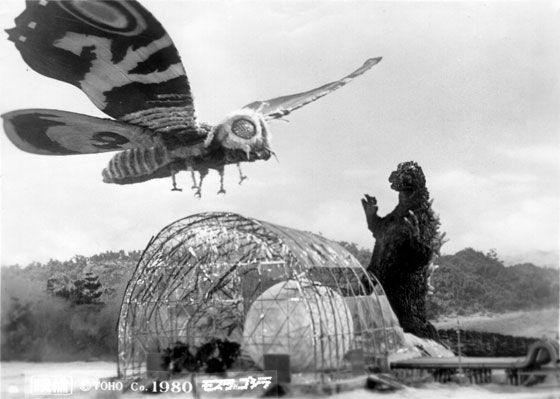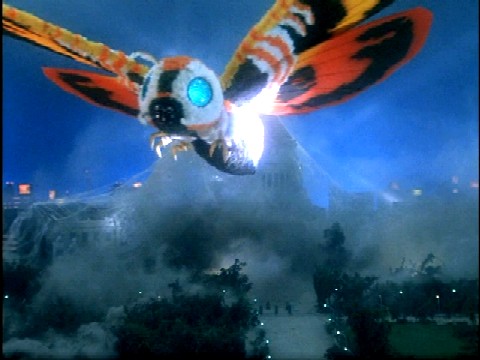Researchers in Japan say they have found evidence that radiation from the March 2011 Fukushima Daiichi nuclear power plant accident has caused the mutation of dozens of butterflies.

Features such as stunted wings, irregularly developed eyes, disfigured antennas and different color patterns found in butterflies from irradiated regions have led scientists to say they have found evidence to suggest a link between the genetic mutations and the radioactive material that was leaked into the environment last year.
"We conclude that artificial radionuclides from the Fukushima Nuclear Power Plant caused physiological and genetic damage to this species," said the researchers' report, which was recently published in the journal Scientific Reports.
The study is one of the first to explore the genetic impacts of the disaster.
According to the BBC, two months after the Fukushima nuclear accident, researchers collected 144 adult pale grass blue butterflies from 10 locations in Japan, including the Fukushima area.
Lead researcher Joji Otaki from the University of the Ryukyus in Okinawa said the results were surprising.
"It has been believed that insects are very resistant to radiation," Otaki told the BBC. "In that sense, our results were unexpected."

According to the study, the team found that areas with higher levels of radiation in the environment were home to butterflies with more mutant characteristics. In all,about 12 percent of the 144 butterflies were found to be mutant.
Though this news is perhaps disturbing enough, what researchers say is even more alarming is that these mutations are spreading rapidly through subsequent generations.
When Otaki and his team bred the butterflies in a laboratory setting, they discovered that a whole "suite of abnormalities that hadn't been seen in the previous generation" began to appear.
Moreover, six months after the first collection, researchers found that butterflies from the Fukushima area showed a mutation rate "more than double" that of those found two months after the accident.
The researchers concluded that this higher rate of mutation likely came from butterflies eating contaminated leaves and also from mutations of genetic material being passed on to subsequent generations by mutant parents.
“Since we’ve seen these effects on butterflies, it’s easy to imagine that it would also have affected other species as well,” Otaki told NBC. “It’s pretty clear that something has gone wrong with the ecosystem.”
University of South Carolina biologist Tim Mousseau -- who studies the impacts of radiation on animals and plants, but who was not involved in this study -- told the BBC that this research is a crucial step forward in understanding the impact of radiation on humans and other living things.
"This study is important and overwhelming in its implications for both the human and biological communities living in Fukushima," Mousseau said.
The Fukushima nuclear disaster occurred after a 9.0-magnitude earthquake knocked out a power line at the plant last March. The earthquake triggered a tsunami that flooded the facility's emergency generators, causing meltdowns to occur in three reactors. Within days, thousands of residents were evacuated from the area as radioactive material continued to leak into the environment.

Features such as stunted wings, irregularly developed eyes, disfigured antennas and different color patterns found in butterflies from irradiated regions have led scientists to say they have found evidence to suggest a link between the genetic mutations and the radioactive material that was leaked into the environment last year.
"We conclude that artificial radionuclides from the Fukushima Nuclear Power Plant caused physiological and genetic damage to this species," said the researchers' report, which was recently published in the journal Scientific Reports.
The study is one of the first to explore the genetic impacts of the disaster.
According to the BBC, two months after the Fukushima nuclear accident, researchers collected 144 adult pale grass blue butterflies from 10 locations in Japan, including the Fukushima area.
Lead researcher Joji Otaki from the University of the Ryukyus in Okinawa said the results were surprising.
"It has been believed that insects are very resistant to radiation," Otaki told the BBC. "In that sense, our results were unexpected."

According to the study, the team found that areas with higher levels of radiation in the environment were home to butterflies with more mutant characteristics. In all,about 12 percent of the 144 butterflies were found to be mutant.
Though this news is perhaps disturbing enough, what researchers say is even more alarming is that these mutations are spreading rapidly through subsequent generations.
When Otaki and his team bred the butterflies in a laboratory setting, they discovered that a whole "suite of abnormalities that hadn't been seen in the previous generation" began to appear.
Moreover, six months after the first collection, researchers found that butterflies from the Fukushima area showed a mutation rate "more than double" that of those found two months after the accident.
The researchers concluded that this higher rate of mutation likely came from butterflies eating contaminated leaves and also from mutations of genetic material being passed on to subsequent generations by mutant parents.
“Since we’ve seen these effects on butterflies, it’s easy to imagine that it would also have affected other species as well,” Otaki told NBC. “It’s pretty clear that something has gone wrong with the ecosystem.”
University of South Carolina biologist Tim Mousseau -- who studies the impacts of radiation on animals and plants, but who was not involved in this study -- told the BBC that this research is a crucial step forward in understanding the impact of radiation on humans and other living things.
"This study is important and overwhelming in its implications for both the human and biological communities living in Fukushima," Mousseau said.
The Fukushima nuclear disaster occurred after a 9.0-magnitude earthquake knocked out a power line at the plant last March. The earthquake triggered a tsunami that flooded the facility's emergency generators, causing meltdowns to occur in three reactors. Within days, thousands of residents were evacuated from the area as radioactive material continued to leak into the environment.
Everyone Who was Born during The 70's should know Who Mothra Is:
 |
| Here you see Mothra The Giant Moth fighting one of Japans other Nuclear Creations Godzilla |
 |
| Mothra Was a Female Moth Which would die and usually Two large giant caterpillars would finish the job it started. Mothra Would use High speed Wind, A form of Spores from it's body, and Webbing to fight with. Here you see It's using it's webbing on the US capital. This is also a new modern Mothra. |
 |
| Even As a Kid I saw that Even If Mothra Was a Giant Moth, She Still Kicked Ass! See Her drag Godzilla To the Sea. |

No comments:
Post a Comment